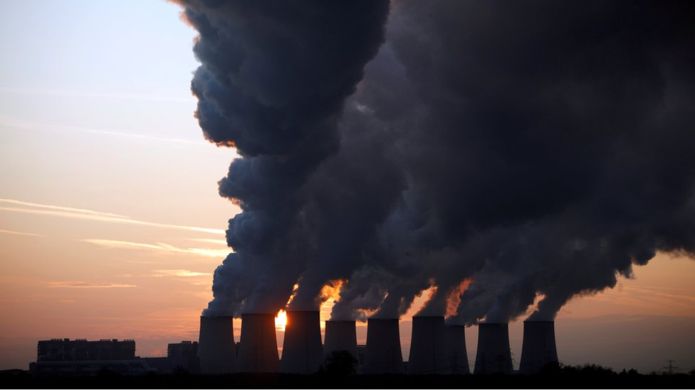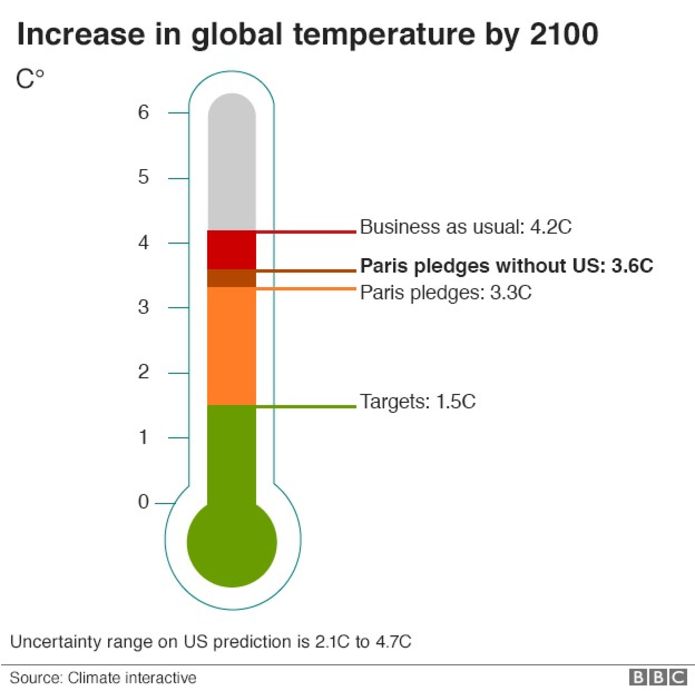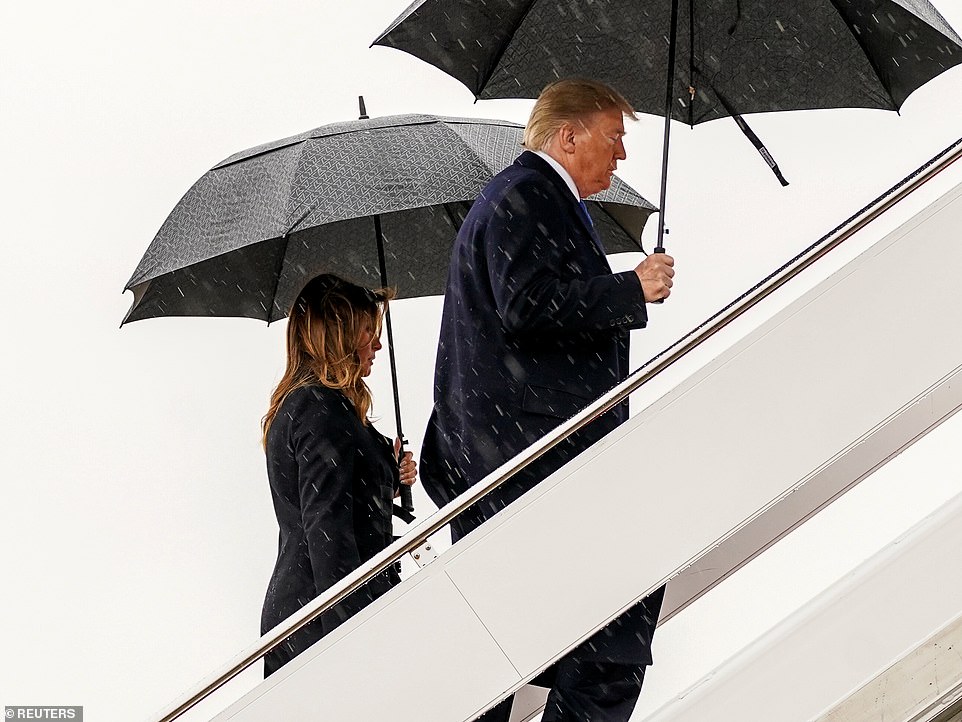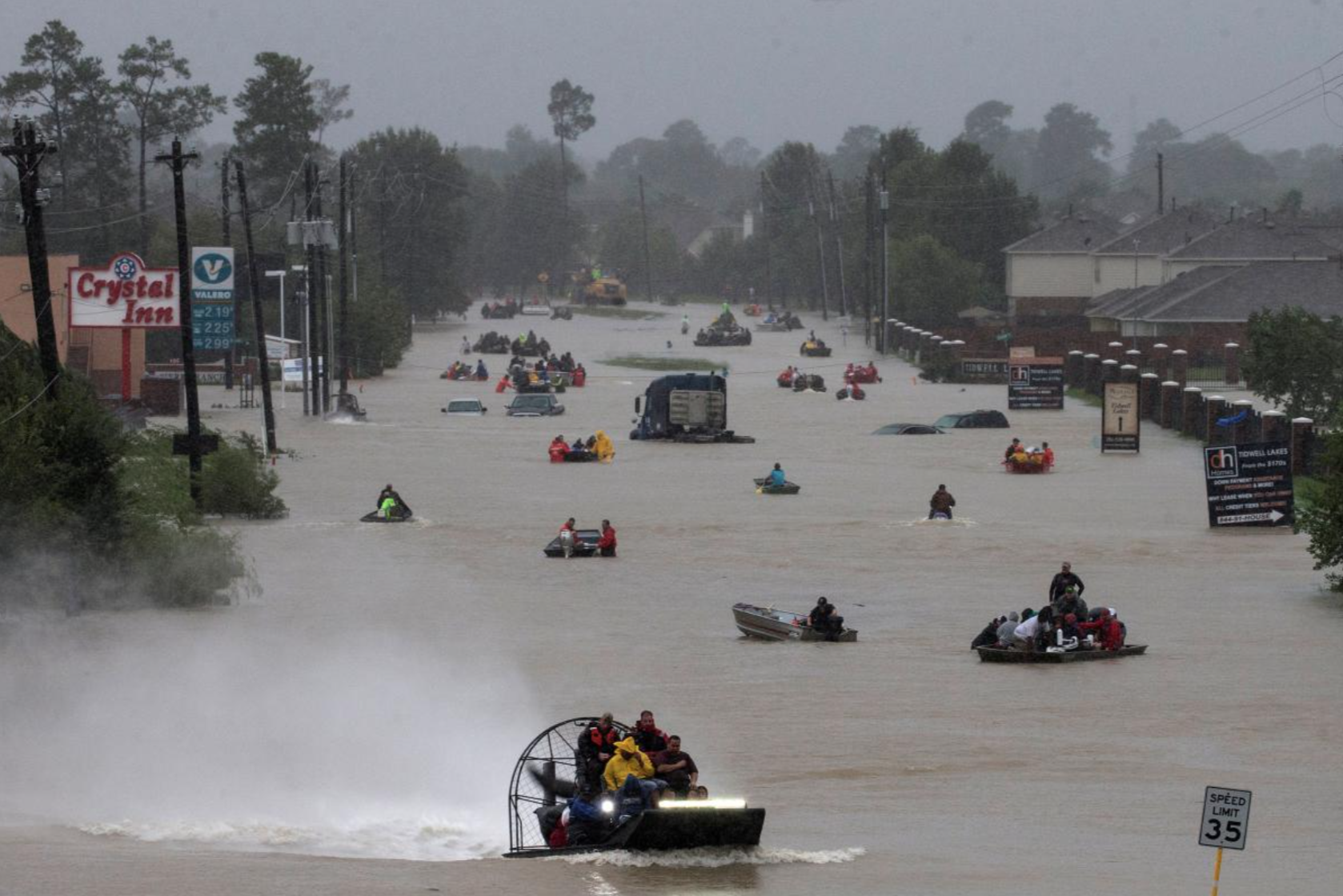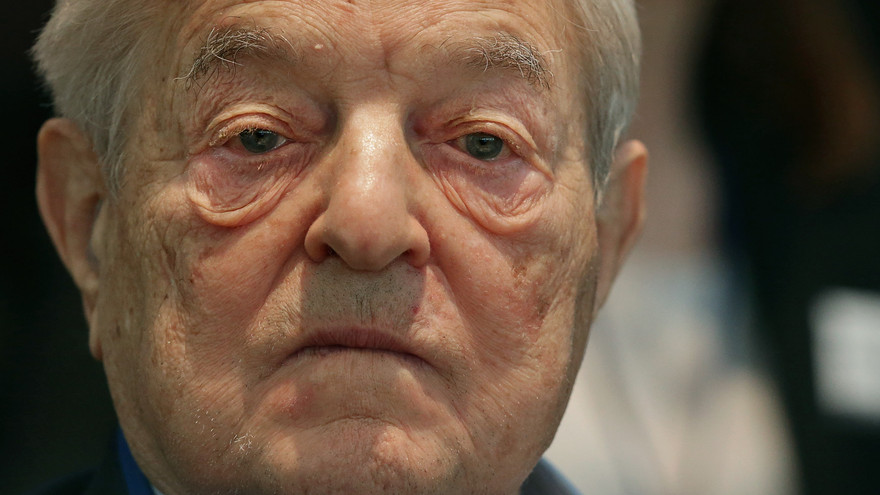The Trump administration on Friday notified the United Nations of its intention to withdraw from the 2015 Paris Climate Agreement. It also indicated that Washington would remain in the talks despite the withdrawal.
In a statement to reporters, the U.S. State Department said, “The United States supports a balanced approach to climate policy that lowers emissions while promoting economic growth and ensuring energy security.
“We will continue to reduce our greenhouse gas emissions through innovation and technology breakthroughs and work with other countries to help them access and use fossil fuels more cleanly and efficiently and deploy renewable and other clean energy sources, given the importance of energy access and security in many nationally determined contributions.”

A protestor opposed to the Paris Accord which remains a controversial issue in U.S. Credit: Getty Images
The notification comes two months after President Trump announced his intention to withdraw the U.S. from the Accord rejecting appeals from world leaders opposed to the withdrawal.
He argued that the deal punished the country and would cost millions of American jobs. In June, President Trump had also indicated that he was open to another climate deal “on terms that are fair to the United States.”
The announcement is perceived as largely symbolic as no nations that desires to leave cannot do until 4 November 2019.
The actual withdrawal process is lengthy and can take up to year, meaning it could finally be completed by 2020 the latest, either under the same Administration or another.
In its statement Friday, the State Department indicated that, “The United States will continue to participate in international climate change negotiations and meetings….to protect U.S. interests and ensure all future policy options remain open to the administration.”
Two studies concluded earlier in the week that concluded that global temperatures are likely to rise more than 2 degrees Celsius (3.6 degrees Fahrenheit) by the end of the century — a symbolic threshold the Paris agreement explicitly seeks to avert.
The Paris accord aims to limit the global rise in temperature attributed to emissions. Only Syria and Nicaragua did not sign up.
Countries agreed to:
Keep global temperatures “well below” the level of 2C (3.6F) above pre-industrial times and “endeavour to limit” them even more, to 1.5C
Limit the amount of greenhouse gases emitted by human activity to the same levels that trees, soil and oceans can absorb naturally, beginning at some point between 2050 and 2100
Review each country’s contribution to cutting emissions every five years so they scale up to the challenge
The Paris agreement remains in effect because of the number of countries that ratified it, which is, all the countries with the exception of Nicaragua and Syria are signatories.
Copyright © 2017 Manyika Review.

